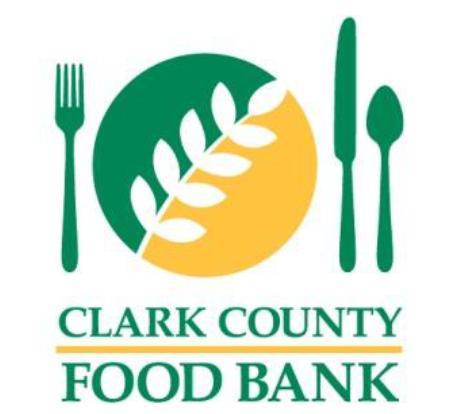.jpg) Field trips are a great opportunity to connect with different student age groups, introduce them to local food issues, and even recruit future volunteers! For the last three years, Clark County Food Bank has hosted around 125 second-grade students from a nearby elementary school to visit and learn about the food bank and its farming efforts. For many of the students, it is their first time hearing about the food bank. Four different stations were set up so that the kids could not only participate in what the Clark County Food Bank does, but understand the significance. The kids were split into four different groups and transitioned between the stations.
Field trips are a great opportunity to connect with different student age groups, introduce them to local food issues, and even recruit future volunteers! For the last three years, Clark County Food Bank has hosted around 125 second-grade students from a nearby elementary school to visit and learn about the food bank and its farming efforts. For many of the students, it is their first time hearing about the food bank. Four different stations were set up so that the kids could not only participate in what the Clark County Food Bank does, but understand the significance. The kids were split into four different groups and transitioned between the stations.
1. Food Sequencing Game: The purpose of this activity is to teach the kids:
(1) what community is,
(2) what volunteers are and how they are important, and
(3) how food gets from seed to the plate of a person in need.
First, ask them what “community” is and allow them to give a few answers, and add on to it if necessary. Then play the “Food Sequencing Game” where twelve of the kids are given a card that depicts each step from seed to plate. Then the rest of the kids must place the kids holding cards in the correct order. An example of the images for each card can be found here in the correct order. The “Volunteer” card is left for last so that the final piece of the game is to explain what a volunteer is, and how they are necessary at every stage of the journey. This activity helps the kids really understand not only how the farming program works, but how it factors in to feeding hungry people.
2. Carrot Harvest: Students harvest carrots to be taken back to Clark County Food Bank. This allows them to participate as regular volunteers would. They get to see for themselves what volunteering involves and how fun it can be.
3. Carrot Washing & Bagging: This is the second half of every regular volunteer shift—washing the harvested carrots and bagging them into individual distributable packages. This is another important step in the food’s journey from the farm to someone’s plate. This activity and the harvest are also a significant contribution to Clark County Food Bank farming efforts. In 2015, the students harvested, washed and bagged 1100 pounds of carrots!
4. Carrot Taste Test: For this activity, students sample both raw and cooked carrots. After each sample, they are asked to place a sticker on a poster board in the category they agree with most. The categories are “Tried It, Liked It, and Loved It.” Negative options weren’t included, and kids could only vote if they agreed to try the carrots. This way, kids are encouraged to develop positive associations with eating healthy veggies.

.jpg) Field trips are a great opportunity to connect with different student age groups, introduce them to local food issues, and even recruit future volunteers! For the last three years, Clark County Food Bank has hosted around 125 second-grade students from a nearby elementary school to visit and learn about the food bank and its farming efforts. For many of the students, it is their first time hearing about the food bank. Four different stations were set up so that the kids could not only participate in what the Clark County Food Bank does, but understand the significance. The kids were split into four different groups and transitioned between the stations.
Field trips are a great opportunity to connect with different student age groups, introduce them to local food issues, and even recruit future volunteers! For the last three years, Clark County Food Bank has hosted around 125 second-grade students from a nearby elementary school to visit and learn about the food bank and its farming efforts. For many of the students, it is their first time hearing about the food bank. Four different stations were set up so that the kids could not only participate in what the Clark County Food Bank does, but understand the significance. The kids were split into four different groups and transitioned between the stations.